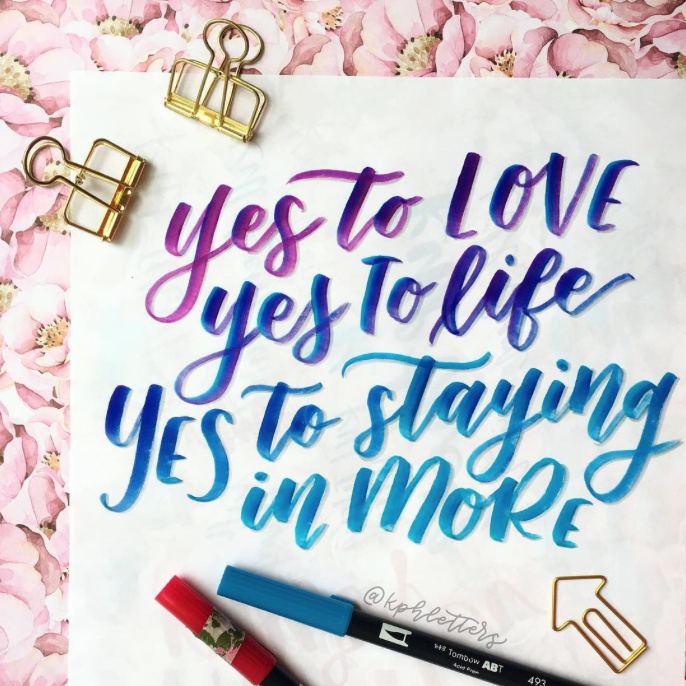Left-Handed? Here are 5 Quick Tips to Learn Calligraphy

Calligraphy is a mesmerizing technique for all manner of paper goods - stationery, place cards, invitations, and mailed letters. However, for someone left-handed, it tends to present a few messy problems (read: lots of smudges). But that shouldn't deter any creative "lefty" from giving hand lettering a try, especially when you consider that a recent handwriting study conducted by BIC and Wakefield Research found that 58 percent of left-handed people think they're more creative than their right-handed counterparts.
To help, we talked to a few popular calligraphers who are making waves on Instagram's #leftycalligraphy hashtag for their advice on how lefties can improve their skills. Calligraphers 25-year-old Mary of @honeyandolivelettering and 34-year-old Kristen of @kphletters - both left-handed, obviously - kindly shared their wisdom.
Before we dive into five very key tips, just remember: there are so many ways you can put pen to paper nowadays (notebooks, apps, etc.), so it's all about finding what works best for you.
1. Start Small
We mean this literally. Kristen recommends lefties opt for smaller, stronger brush pens when just starting out.
"When a righty is using a brush pen, for the most part they are pulling the pen along - left to right - with the grain of the brush tip so it doesn't cause any damage to the pen," she explains. "When a lefty is using a brush pen, a lot of the time they are pushing the brush tip - left to right - against the grain causing fraying."
You will damage your pens faster than your right-handed counterparts, and that's okay. Once you're accustomed to the strokes that work for you, then, Kristen says, "buy all the pens."
2. Work From Bottom to Top and Right to Left
According to Kristen, this is her biggest tip. "Whenever possible, I will work from bottom to top and right to left," she says. "This helps me avoid smudging areas that I've already worked on, especially when working with watercolor brush lettering."
3. Change Your Grip
Don't be afraid to try new pen grips. Through trial and error, you'll eventually find what works for you. Pro tip from Mary: aim a little higher. "My hand tends to run over ink after I've written it," she says, "so I had to train myself to grip brush pens and other lettering tools higher so that didn't happen."
4. Use Specialty Tools
Mary tells us that, at first, she didn't know lefties needed to use a different nib holder. Don't worry though, she says that "it didn't take long to get used to."
5. Practice, Practice, Practice
Both Kristen and Mary stress the importance of practicing. As with anything, the more you work on it, the better you'll be. Consider looking into some free drills or tutorials online to get started. While you wait to become a total pro, fill your supplies collection with quick-drying pens and hope for the best. Don't be too hard on yourself if it takes you a bit to pick up this new skill!
Feeling inspired? Watch how to write in calligraphy here:

